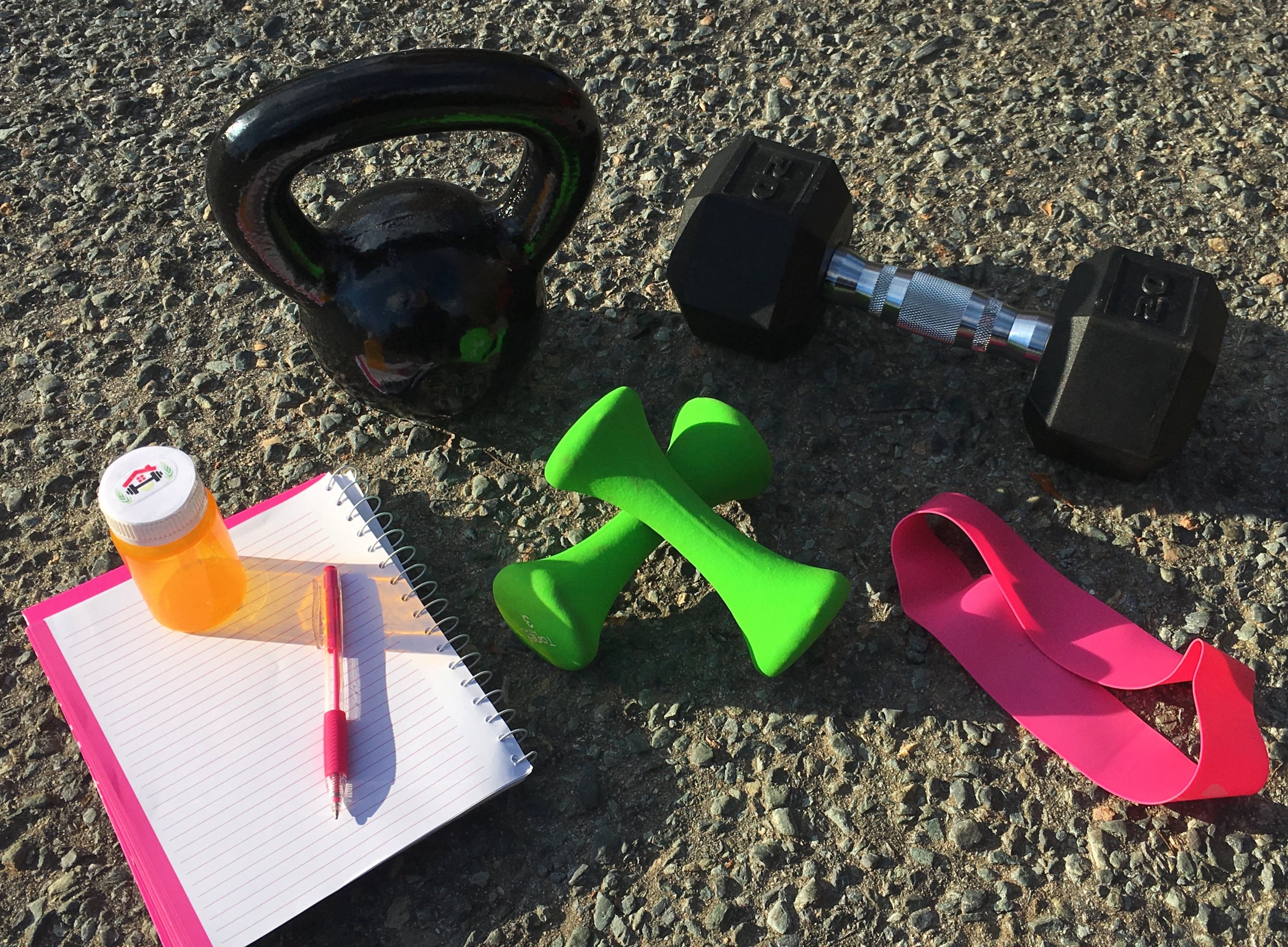
Medicine is usually something that comes in pill form and is prescribed by a qualified professional. Exercise is Medicine because it can be used to prevent, treat, or alleviate an illness/disease. The American College of Sports Medicine (ACSM) founded this global health initiative. Exercise is Medicine recognizes Physical Activity as prevention, treatment and a part of health care. As a Certified Exercise Physiologist, I write exercise prescriptions on a regular basis. I am very passionate about exercise and what it can do for people! One of my missions is to educate people about their health and how it can be improved. I believe fitness is for everyone and therefore, a lifestyle. Below are some top health benefits regular exercise provides.
1. Exercise Lowers Blood Pressure- During exercise your heart rate and blood pressure increase. This is a normal response of the cardiovascular system. The benefits after a workout are from Post-Exercise Hypotension, the temporary lowering of blood pressure. This is due to the dilation of blood vessels to allow for the increased circulation of oxygenated blood and metabolites (substances in the body). Over time, Cardiac Output Increases which is a long-term adaptation to exercise that results in lowered blood pressure.
2. Exercise Decreases Risk of Osteoporosis- Osteoporosis is a condition in which the bones become fragile and weak. Weight bearing exercises such as lifting weights, aerobics or walking can increase bone density resulting in stronger, more resilient bones. When the skeletal system is loaded via weight training this puts a good stress on bones. It forces osteoblasts (bone-forming cells) to be stimulated and form new bone cells. This is why weight training is especially important for women, as they are at increased risk for developing Osteoporosis.
3. Exercise Prevents Chronic Disease- Heart Disease, Stroke, Type 2 Diabetes, Obesity, Arteriosclerosis, Hypertension and Dyslipidemia can all be related to lack of exercise. These “lifestyle diseases” can be prevented with regular exercise and are especially beneficial when combined with diet and lifestyle improvements. Heart disease is the leading cause of death in the U.S. but exercise can change this!!
4. Exercise Reduces Risk of Many Cancers- Exercise has proven to lower the incidence of Bladder, Breast, Colon, Endometrium, Esophageal, Kidney, Lung, Prostate, and Stomach. Cancer is defined as uncontrolled cell growth. With exercise, the body undergoes systemic (full body) responses which improves the immune system and keep the good cells functioning properly. Exercise also helps to control weight and lower insulin and estrogen levels, which can influence the development of many types of cancers.
5. Exercise Reduces Joint Stiffness- Staying mobile keeps the joints lubricated and blood circulating. Moving increases the production of synovial fluid (lubricant inside the joints) which reduces stiffness in knees, hips, elbows, shoulders and other joints.

6. Exercise Improves Cholesterol Levels- There are two main kinds of cholesterol in the body, first is LDL or “Bad Cholesterol”. High levels of LDL can put you at greater risk for heart disease, stroke and other diagnosis. The HDL or “Good Cholesterol” can be increased with regular exercise. If one’s HDL (good cholesterol) is ≥ 60 mg/dL this can cancel out other risk factors of cardiovascular disease. High levels of HDL are good and can be cardioprotective.
7. Exercise Helps with Low Back Pain- Low back pain is one of the most common conditions in the United States. Low back pain can be muscular, skeletal or nerve related. Regular exercise can strengthen the muscles that surround the lumbar region (low back). Strong upper and lower back muscles provide support during daily activities that may normally cause low back pain. This support can also improve posture and flexibility. The sciatic nerve is among the most common sources for nerve-related back pain. This nerve can become aggravated due to the piriformis muscle pressing on the nerve ending. Daily movement like walking and body-weight exercises can reduce nerve inflammation and minimize the pain. Stretching and practicing yoga is also great for low back pain as it releases the pressure in the vertebrae and sacroiliac (SI) joint.
8. Exercise Lowers Inflammation- Chronic inflammation is associated with almost every disease or illness. Exercise has proven to have anti-inflammatory effects after just 20 minutes of working out. Exercise stimulates the circulatory system which releases catecholamines like epinephrine and norepinephrine. These hormones maintain homeostasis in the body and work with other neurotransmitters (chemicals) to combat inflammation. Inflammatory cells like C-reactive Protein, Interleukin-6, and Homocysteine are some of the most common (markers associated with cardiovascular events).
9. Exercise Regulates Blood Sugar and Insulin Levels- Exercise improves insulin sensitivity which is very important for diabetes and other metabolic diseases. Insulin is the hormone released when there is too much glucose (sugar) in the bloodstream (like after a meal). This “fast-storage hormone” is responsible for removing excess glucose from the blood. Too much glucose circulating is dangerous and results in hyperglycemia. With regular exercise, glucose is recognized and utilized more effectively. Therefore the Pancreas doesn’t have to work as hard to produce insulin. Increased muscle mass also allows additional glucose to be stored in the form of glycogen (stored glucose found in muscle) and later used for fuel.

10. Exercise Improves Brain Health- Exercise stimulates the release of neurotransmitters that boost mood and cognitive abilities. Endorphins like Serotonin and Dopamine are released after exercise and make the brain feel “happy”. This release of chemicals in the brain can improve mood, decrease stress, reduce anxiety and even depression. Physical activity can also reduce neurological diseases like Alzheimer’s, Parkinson’s and Huntington’s Disease. Exercise increases Brain-Derived Neurotrophic Factor (BDNF) which is essential for the brain to develop and function.
11. Exercise Improves Sleep- With regular exercise, the body exerts itself and feels more “tired” as a result. After a hard workout the body craves rest and recovery. In addition, many chemicals are released in the brain during and after exercise which play a role in calmness and promote better sleep.
12. Exercise Improves Memory, Focus, and Attention- Exercise enhances neuroplasticity (the brain’s ability to develop and create new connections). Neuroplasticity is necessary for learning and developing which leads to new memories and connections. A workout requires mental focus which makes it beneficial for ADHD and other attention disorders.
13. Exercise Decreases Body Fat- Excess body fat affects our external appearance, but it also significantly affects our internal health! Increased body fat puts an individual at a greater risk for Heart disease, Type 2 Diabetes, Cancer and Premature Death. Many lifestyle diseases can be prevented or reversed with weight loss. Extra weight can also place an incredible stress on the bones, and joints and cause problems with activities of daily living. By maintaining a healthy body weight this improves mobility, health, confidence and longevity.
14. Exercise is Therapeutic for Illness or Disease- Exercise can be therapeutic to someone living with a current diagnosis. Exercise can decrease pain and improve quality of life. This is why Physical Therapy and Cardiac Rehab are so important. Whether someone is dealing with an injury, chronic illness or autoimmune disease, exercise has many functional benefits. *All physical activity counts for something, so even walking and gentle stretches can benefit someone with a chronic disease or other physical limitations.
15. Exercise Improves Circulation-Having poor blood circulation can lead to many health problems and a decreased quality of life. As a result, water retention occurs and leads to swollen legs, feet and more stress on the lower extremities. Walking, Stretching and even Lifting Weights all promote blood flow throughout the body. Movement can also stimulate the detox organs such as the liver, kidneys and lymphatic system.
*This information is not intended to Diagnose, Treat or Cure.

Thanks for reading! I hope this information educates and encourages you on the many health benefits of exercise. Have you had your daily dose of Medicine (exercise) today? For a Personalized Exercise Prescription click here to get started.
In Health, Stephanie

